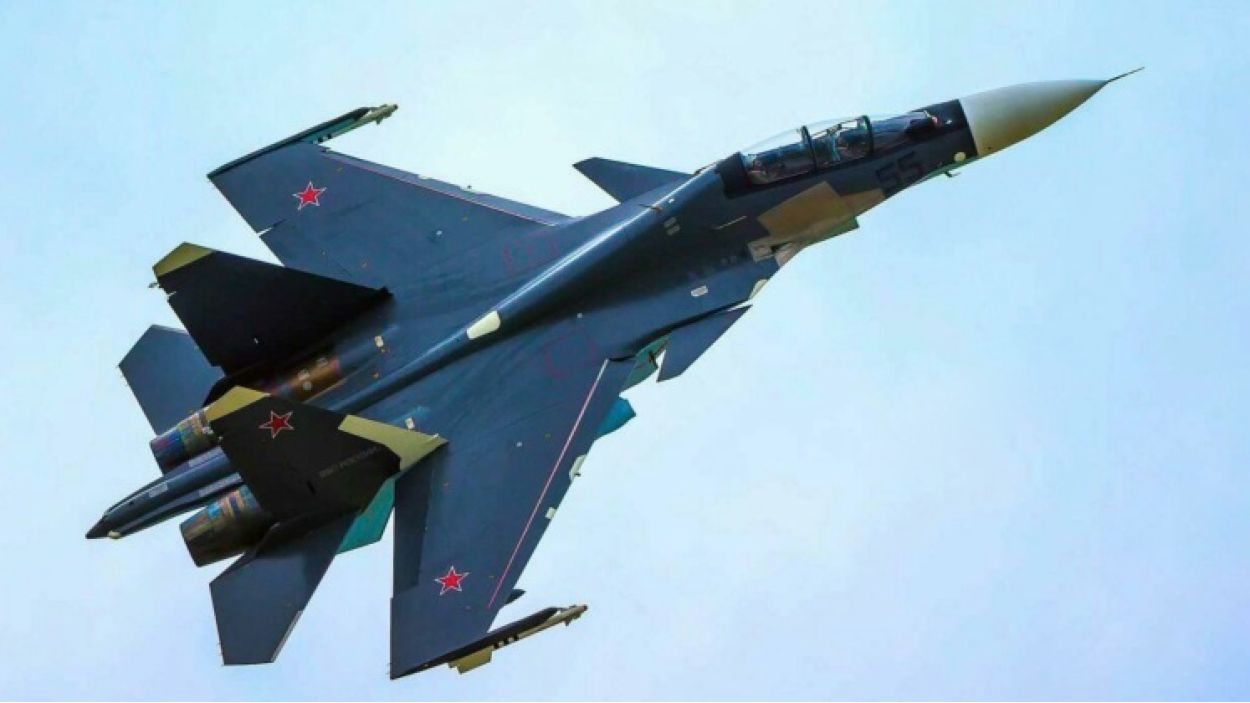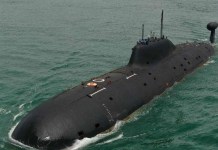Myanmar and Russia are participating in their first joint naval drills, representing expanding relations between the two nations amid deteriorating ties with the Western world.
Russian naval vessels transporting a total of 800 sailors started arriving in Myanmar on November 2. The joint drills, which include Russia’s Pacific Fleet and Myanmar’s navy, are scheduled to continue till November 9 in the Andaman Sea.
Both naval forces will contribute vessels and aircraft to exercises that simulate the interception of air, surface, and underwater threats, as well as implementing measures for maritime security.
The maritime security exercise with Russia is taking place approximately 157 kilometers (85 miles) to the west of Myeik in Myanmar’s southern region. Media reports said some Russian naval vessels sailed from Yangon to participate in the event.
The Myanmar navy has issued a warning as a safety measure, restricting ships from entering an 8-kilometer radius around the exercise area. Additionally, aircraft are advised to maintain an altitude not lower than 46,875 meters during the training days.

Before the commencement of the exercise, Admiral Nikolai Yevmenov, the Russian naval chief, held a meeting with junta leader Min Aung Hlaing on board the Russian destroyer Admiral Tributs. During this meeting, Admiral Yevmenov provided a detailed briefing on the ship’s capabilities.
The Russian naval vessel’s visit is timed to align with the concurrent conflicts in northern Myanmar, close to the Chinese border, sparked by a recent coordinated offensive by minority ethnic factions.
Russia has emerged as a crucial ally for the junta that seized control in Myanmar through a coup in 2021, toppling Aung San Suu Kyi. Moscow has offered weaponry and diplomatic backing to the junta.
The Russian government extends arms and diplomatic backing as the country’s military endeavors to quell armed opposition to its authority.
Junta leader Min Aung Hlaing also met Russian President Vladimir Putin during one of his numerous visits to Russia. Additionally, the Myanmar military has expressed its view that Moscow’s invasion of Ukraine was “justified.”
In September, Myanmar and Russia co-chaired a “counterterrorism” military exercise hosted in Russia’s Far East, where militaries from many nations from the Association of Southeast Asian Nations (ASEAN) assembled.
The Kremlin has referred to General Min Aung Hlaing as the “prime minister,” a title that the junta leader self-appointed but remains unrecognized by other major countries.
Furthermore, Myanmar also became a dialogue partner in the Shanghai Cooperation Organization, an eight-member entity that includes Russia, China, India, and Pakistan. This organization, initially formed by China, serves as a counterbalance to Western influence in Central Asia.
Myanmar-Russia first joint naval drill#Myanmar #Russia #joint_naval_drill #security #joint_naval_exercise #Andaman_Sea #maritime_security #미안먀 #러시아 #해군합동훈련 #Arirang_News #아리랑뉴스 pic.twitter.com/1RZmNXWzYB
— Arirang News (@arirangtvnews) November 8, 2023
Russia Myanmar Partnership
Myanmar faced isolation from Western nations and estrangement from neighboring countries after the military seized power and enforced a severe crackdown. Even its closest ally, China, indicated discomfort with the resulting instability.
In this desperate pursuit for legitimacy, the Myanmar junta turned towards Russia, fostering a relationship that benefits both sides.
Myanmar gains resources, ammunition, and a strong ally at the United Nations, while Russia secures an economic partner during its financial challenges.
Both countries exploit this bond to counteract Western sanctions – Myanmar for its coup and Russia for its actions in Ukraine.
Russia significantly supports and supplies arms to Myanmar’s military government, established after the 2021 coup. In return, the ruling generals back Moscow’s foreign policy goals and defend Myanmar’s government in international forums.

Myanmar has been marginalized by numerous Western nations following the coup and subsequent violent crackdown, resulting in thousands of civilian deaths and sparking armed resistance across the country.
According to Tom Andrews, the UN independent investigator on human rights in Myanmar, a report to the Human Rights Council detailed significant arms supplies to Myanmar’s military.
Russia, China, Singapore, India, and Thailand were identified as major contributors. Post the 2021 coup, 28 Russian companies provided fighter jets, missile systems, reconnaissance drones, and attack helicopters to Myanmar.
Andrews cited a brutal incident on April 11, an air strike using a Russian fighter jet on a gathering of 300 opponents of the army rule, followed by an attack by Russian helicopters, resulting in at least 160 casualties, including children.
These joint exercises coincide with Myanmar’s military facing coordinated offensives from pro-democracy resistance fighters and ethnic armed groups taking control of strategic towns. Russian-made fighter jets are used in attacks against these groups.
- Contact the author at ashishmichel(at)gmail.com
- Follow EurAsian Times on Google News




